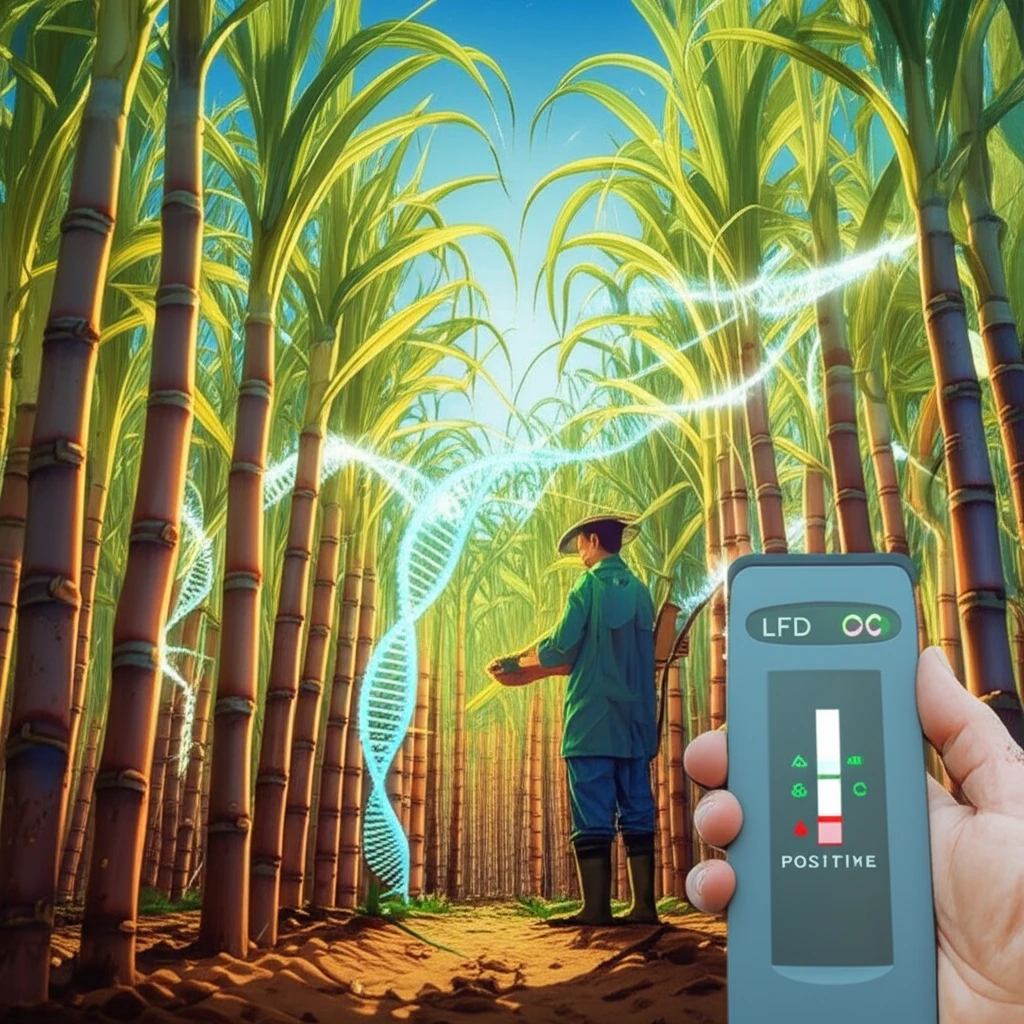
Faster Sugarcane Testing: How New Tech Can Help Farmers
"A modified RS-LAMP assay and lateral flow devices offer quicker, on-site detection of Leifsonia xyli, helping to improve sugarcane yield and combat ratoon stunting disease."
Sugarcane farmers know that a healthy crop means a profitable harvest. But what happens when a silent threat lurks beneath the surface, stunting growth and slashing yields? Ratoon stunting disease (RSD), caused by the bacterium Leifsonia xyli subsp. xyli (Lxx), is a widespread problem that can lead to substantial losses in sugarcane production. Traditional methods for detecting this disease are often slow, expensive, and require specialized lab equipment.
The problem is clear: farmers need a fast, reliable, and accessible way to identify RSD early on. This is especially crucial in areas where resources are limited. Ignoring this disease can result in up to a 50% reduction in yield, making early detection a key factor.
Fortunately, researchers have been working hard to find a better solution. This article explores a promising new approach that combines a modified RS-LAMP assay with lateral flow devices (LFDs) to rapidly detect Lxx right in the field. We'll break down how this technology works, why it's a game-changer, and how it can help farmers protect their sugarcane crops.
The New Testing Method: Fast, Accurate, and Accessible

The innovative testing method centers around Loop-mediated Isothermal Amplification (LAMP), a technique that amplifies DNA quickly and efficiently. In this case, researchers modified a specific LAMP assay (RS-LAMP) to target Leifsonia xyli subsp. xyli (Lxx). The key improvements include:
- Substituting traditional colorimetric detection with lateral flow devices (LFDs) for easy visualization. Think of it like a pregnancy test for sugarcane – a simple line indicates the presence of the disease.
- Creating a pre-prepared master mix that can be stored for up to 4 months, making it accessible for on-site testing.
- Exploring the use of sugarcane leaf sheaths as a sample source, which can be easier to obtain than xylem sap (the fluid extracted from the plant's core).
Empowering Farmers with Rapid Testing
The development of this modified RS-LAMP assay represents a significant step forward in combating ratoon stunting disease. By offering a faster, more accessible, and reliable testing method, this technology empowers farmers to make informed decisions, minimize yield losses, and improve overall sugarcane production.
Here's why this matters:
<ul><li>Early detection: Enables farmers to identify and address RSD infections early, preventing widespread damage.</li><li>Reduced costs: Lowers the expenses associated with traditional lab-based testing.</li><li>On-site testing: Allows farmers to perform tests directly in the field, eliminating the need to send samples to a lab.</li><li>Improved yields: Helps farmers maintain healthy crops and maximize sugarcane production.</li></ul>
